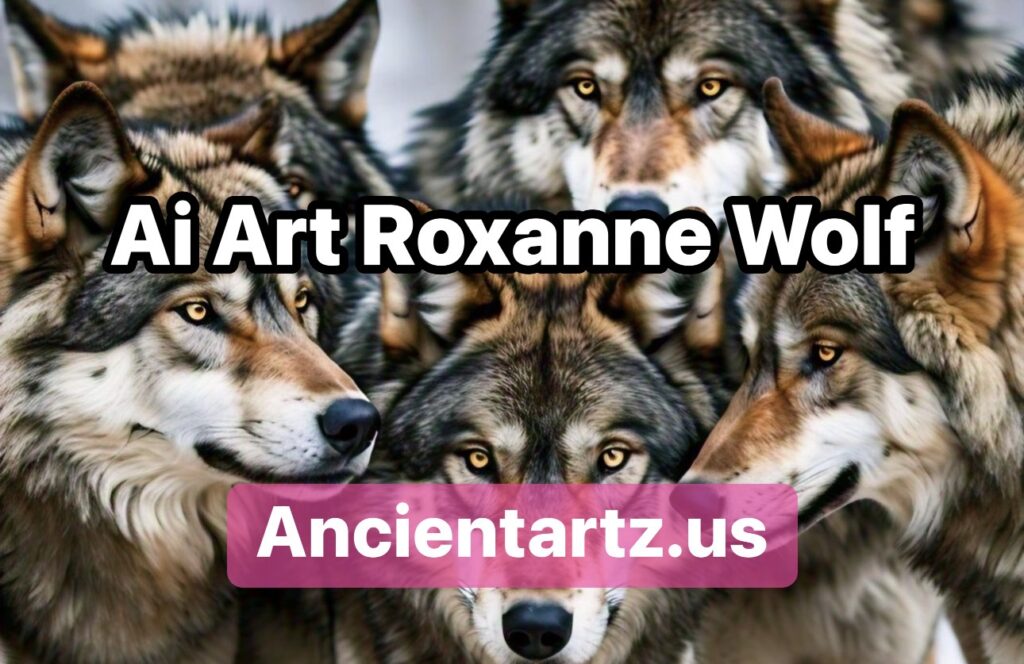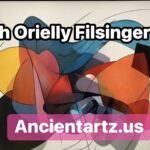Introduction
The rise of artificial intelligence (AI) has sparked significant changes across various industries, and the art world is no exception. AI-generated art is transforming how we create, experience, and think about art. One of the most intriguing characters to emerge from this landscape is Roxanne Wolf, a central figure from the “Five Nights at Freddy’s” series. This article will explore Roxanne’s character, the role of ai art roxanne wolf creation, and the broader implications of this technological evolution for artists and audiences alike.
Who is Roxanne Wolf?
Background of Roxanne Wolf
Roxanne Wolf, often referred to as Roxy, is a fictional animatronic character introduced in “Five Nights at Freddy’s: Security Breach.”ai art roxanne wolf This installment of the popular horror franchise features a cast of animatronics, each with unique designs and personalities. Roxy stands out due to her striking visual appeal and multifaceted character traits.
Design Elements: Roxy’s design includes wolf-like features such as pointed ears, sharp fangs, and a sleek fur pattern that combines various colors. Her aesthetic is enhanced by flashy accessories, reflecting her confident personality and vibrant presence.
Personality Traits: Roxy is characterized by her fierce competitiveness and self-assured demeanor. However, she also exhibits moments of vulnerability, adding depth to her character. This blend of traits makes her a compelling figure within the game’s narrative.
Impact on Fans and Community
Roxanne Wolf has quickly become a fan favorite, leading to a plethora of fan art and interpretations. The character’s popularity highlights how modern audiences engage with fictional figures, often creating their own narratives and expressions through art.
The Emergence of AI Art
Understanding AI in Art
Artificial intelligence has revolutionized various creative fields by enabling new methods of generating and manipulating artwork. AI art refers to creations made using algorithms and machine learning models that can analyze existing artworks and produce new pieces.
How AI Generates Art: AI models are trained on vast datasets of existing images, allowing them to learn styles, patterns, and artistic techniques. By ai art roxanne wolf inputting prompts, users can guide the AI to produce specific types of artwork.
Examples of AI Tools: Popular AI art generators include DALL-E, Midjourney, and Artbreeder. These platforms allow users to create images based on text prompts, resulting in unique and often unexpected visual outcomes.
Benefits of AI in Art Creation
The integration of AI into the artistic process offers numerous advantages:
Accessibility: AI tools make art creation more accessible to individuals without formal artistic training. Anyone can generate impressive visuals by simply inputting a prompt, allowing for greater participation in the artistic process.
Speed and Efficiency: AI can generate artwork quickly, enabling artists to explore multiple ideas in a fraction of the time it would take to create manually. This efficiency is particularly beneficial in fast-paced industries like gaming.
Collaboration Opportunities: Artists can collaborate with AI, using its capabilities to enhance their creative processes. This partnership can lead to innovative outcomes that push the boundaries of traditional art.
The Role of AI in Gaming
AI Art in Game Development
In the gaming industry, the visual design of characters, environments, and assets is crucial for creating immersive experiences. AI is increasingly being used in various aspects of game development, particularly in character design.
Concept Art Generation: AI can assist artists in brainstorming and generating initial concepts for characters and environments. This helps streamline the design process, allowing for more efficient development cycles.
Character Customization: AI tools enable developers to create a wider range of character options, allowing players to customize their gaming experience. This personalization fosters greater engagement and connection with the game.
Roxanne Wolf as a Case Study
Roxanne Wolf exemplifies how AI art can influence character design and fan engagement. The popularity of Roxy has led to an explosion of fan art, including many AI-generated interpretations.
Diverse Representations: The use of AI allows fans to explore different artistic styles and techniques. From hyper-realistic depictions to whimsical interpretations, AI-generated art reflects the diverse perspectives within the community.
Community Collaboration: Fans often collaborate using AI tools to create collective pieces, showcasing Roxy in various scenarios and styles. This sense of community enhances the overall experience for fans and strengthens connections among creators.
The Artistic Community’s Perspective
Embracing AI as a Tool
While some artists view AI as a potential threat to traditional art forms, many embrace it as a valuable tool. By integrating AI into their workflows, artists can unlock new creative possibilities.
Innovative Projects: Artists are experimenting with AI in various projects, merging traditional techniques with digital processes. This fusion can result in unique and compelling artworks that challenge conventional boundaries.
Expanding Creative Horizons: AI-generated art can inspire human artists by providing new ideas and perspectives. The collaborative nature of AI allows artists to explore avenues they may not have considered otherwise.
Ethical Considerations in AI Art
The rise of AI art has also raised important ethical questions. Issues related to authorship, copyright, and the impact of AI on traditional artistry are central to these discussions.
Authorship Dilemmas: When an AI generates artwork, questions arise about who should be credited as the creator. Is it the AI, the programmer, or the individual who provided the input? These complexities challenge our traditional notions of creativity.
Copyright Issues: The legal landscape surrounding AI-generated art is still developing. Artists must navigate complex copyright laws that may not adequately address the unique nature of machine-generated works.
The Future of AI Art
Emerging Trends and Technologies
As AI technology continues to advance, the future of AI art holds exciting possibilities:
Increased Personalization: Future AI tools may offer even greater customization options, enabling users to create highly personalized artworks based on their unique preferences and styles.
Integration with Virtual Reality (VR) and Augmented Reality (AR): The incorporation of AI-generated art into immersive environments could revolutionize how audiences experience art, allowing for interactive and engaging encounters.
Enhanced Collaboration: As AI tools become more sophisticated, the collaboration between human artists and AI is likely to deepen. This partnership could lead to new art forms and innovative creative expressions.
Conclusion
The integration of ai art roxanne wolf is transforming the creative landscape, offering exciting opportunities and challenges. Characters like Roxanne Wolf serve as powerful examples of ai art roxanne wolf how AI-generated art can enhance storytelling and foster community engagement.
As we continue to navigate this evolving relationship between AI and art, it is essential to foster discussions about ethics, authorship, and the value of human creativity. Embracing AI as a tool rather than a replacement can lead to groundbreaking expressions that redefine artistic practices in the digital age.
The future of AI art is rich with potential, inviting artists and audiences to explore uncharted territories where creativity knows no bounds. With each new development, we are reminded that art is not just about the medium but about the emotions, stories, and connections it fosters in our ever-evolving world.


